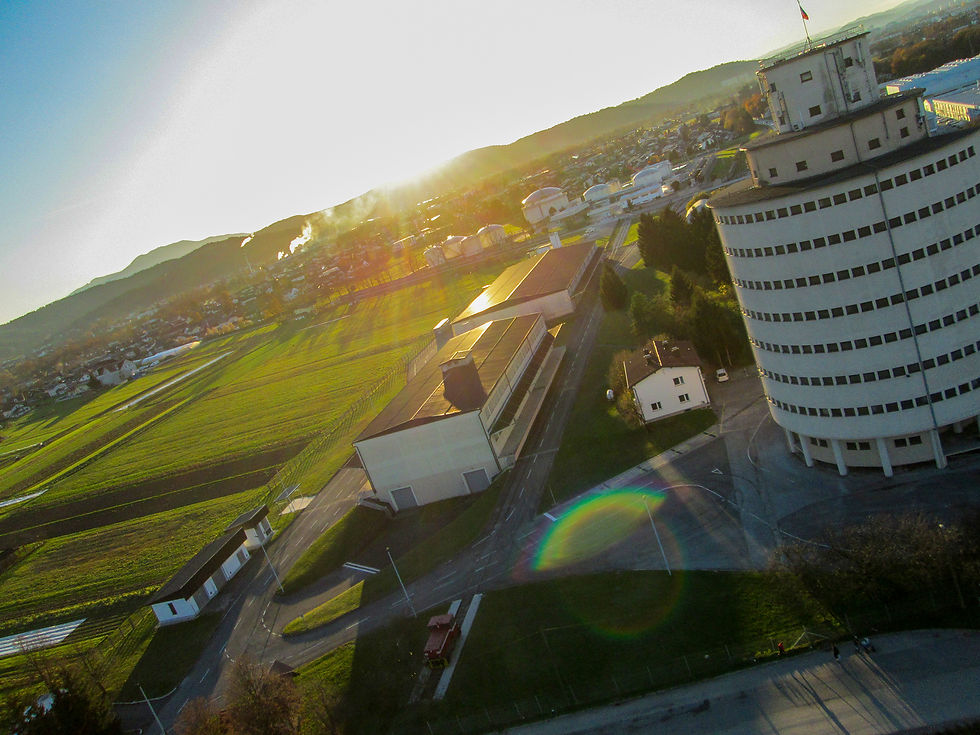Strategic Reserves
- kapjasa
- Nov 23, 2020
- 2 min read
It was not an easy session, but when one waits for almost a month to fly a kite again, one does not trash-talk the moody wind ... ;-)
Between the hamlets of Zgornji Kašelj, Vevče, and Zalog on the eastern edge of Ljubljana basin a huge cylindrical structure rises by the Zaloška road:

It's a silo - a 47 meters high grain silo with enough room to store 800 railroad cars of the most basic staple food. It was built in 1949 and is a part of Strategic Commodity Reserve, run by the Agency of the Republic of Slovenia for Commodity Reserves.

Rough air near the silo
The silo is protected as a technical and architectural monument, and is part of cultural heritage of Slovenia.

The eastern part of Ljubljana basin has a rich history. While prehistoric remains have yet to be found (and they surely will be), the Romans immediately appreciated the fertility of the land and its strategic value. A fort guarding the road through the Sava valley and a river port were excavated in Zalog, and a Villa rustica was discovered by the church of St. Andrew in Upper Kašelj.

Zgornji (Upper) Kašelj lies on on a terrace above the left bank of the Ljubljanica River east of Ljubljana and was first mentioned as Oberchaeschel in 1360; it's name derives either from Castellum - there were two castles on Kašelj Hill to the east, and a dragon lived there! - or Casale, a peasant house/hamlet/settlement.

Today these fields provide excellent veggies sold at the Ljubljana Market, while the villages are slowly losing their agricultural heart with influx of people searching for a nice, cozy, quiet living place near Ljubljana. While Kašelj still retains its Medieval character, the modernisation and industry took hold in Zalog and Vevče. You can see the steam from the Vevče paper mill is seen rising in the distance.

All kite aerial photos shot with Canon A810 o a Rokkaku kite.




Comments